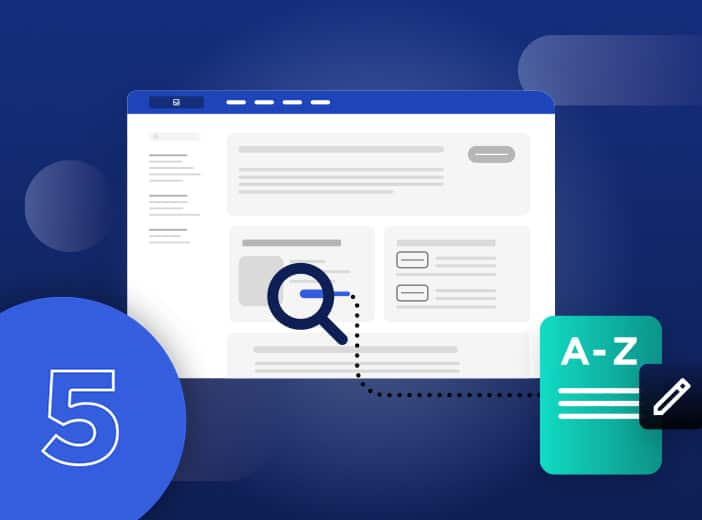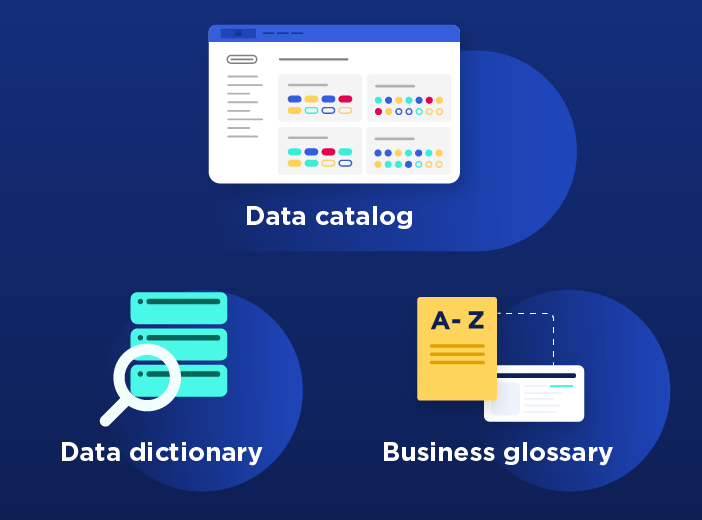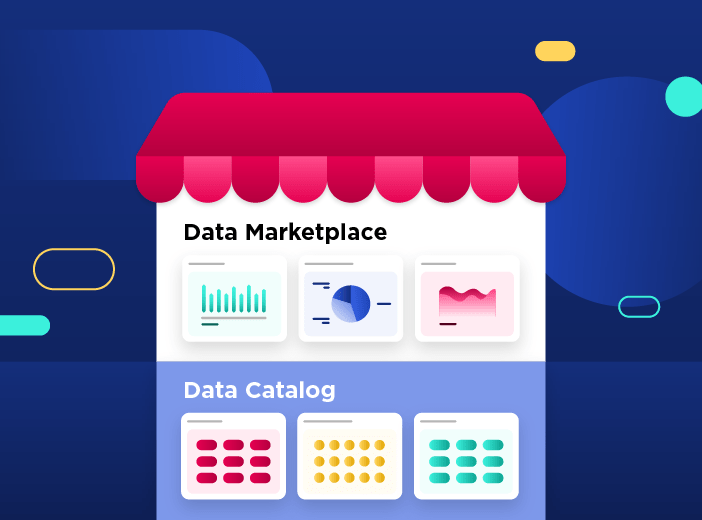5 best practices for creating a business glossary for business teams
How do you reduce misunderstandings around data and ensure there’s a common language used to describe data shared across between every department in an organization? By adopting key best practices, a business glossary provides a simple but effective tool to enable self-service data discovery, improved collaboration between teams, and better-informed decision-making. Find out how!

Previously only available to technical users as part of data catalogs, the business glossary is now being reinvented to reach a wider and more strategic audience of actual business users. Extending its use to those who need it most delivers real benefits and adds value, enabling greater ROI on the efforts and resources invested in its creation and ongoing maintenance. By making it easy to use independently by everyone within the organization, the business glossary supports greater digitalization and meets the requirement for everyone to have immediate, trusted access to information. Essentially, it plays a key role in helping all users effectively navigate and benefit from the company’s data estate. Every organization needs a business glossary, but it must be relevant to everyone, easy to use and able to meet changing business requirements. In this article, we outline five best practices to make the business glossary a driver of increased data consumption and performance within your organization.
1. Integrate the glossary into the most relevant tool to reach business users - the data marketplace
There is no point providing business definitions if they are solely available in tools used by technical experts. To create true value, it is essential to share the glossary where business users can easily access it the definitions that they need.
Previously only integrated into technical data catalogs used by data experts, the business glossary is now finding a new lease of life within data marketplaces. Designed for business users, these platforms facilitate self-service data access through a more intuitive, understandable interface and experience.
Integrating the glossary into the data marketplace drives its seamless adoption. Making it available where and when business users are interacting with data, it spreads the use of standardized definitions and concepts around data. As tools become more specialized, the business glossary essentially plays the same role in the data marketplace as the data dictionary does within the data catalog. By positioning each solution correctly within the data stack, organizations can more easily share data and drive its consumption across the organization.
2. Provide an integrated user experience to make it easy to check definitions
Most users don’t spontaneously stop what they are doing and open a new tool to check a data definition in a glossary. Obviously, no-one wants to interrupt their work to look for information elsewhere. That means that the more directly accessible a definition is in the right context and at the right time, the more likely it is to be read and understood. When the information is delivered is as important as its content.
An effective glossary must therefore be naturally integrated into the tools used when consuming data on a daily basis. In a self-service data marketplace, glossary definitions must be displayed intuitively, without disrupting the user’s journey.
Good practice is to display definitions directly in the interface, for example when hovering over a keyword, while making them available in a dedicated tab. This delivers a smooth, accessible, and user-centric experience.
3. Establish clear governance from the start to ensure long-term value
Clearly defined governance processes are essential to ensuring the long-term usefulness and success of your business glossary. Without a strong framework, maintaining consistent definitions and ensuring effective user adoption is difficult. That makes it vital to define the roles and responsibilities of everyone involved from the beginning, whether they are members of data teams, business departments, or governance managers. It is also important to determine the scope of what will be covered and to establish a structured update process to ensure the glossary’s long-term integrity. Appointing representatives from the business to validate any updates and to manage any necessary trade-offs between departments strengthens user confidence and maintains stakeholder engagement. Strong governance also helps to structure the glossary effectively, build credibility, and ensure that it meets the organization’s current and future needs.
4. Align the glossary with the organizational context to build trust in usage
For a business glossary to be effective and sustainable, it must be aligned with the organization’s real-world operations and priorities. That means it is vital to understand how different departments describe data, and to then standardize and reflect this within relevant terms and concepts in the glossary. A glossary that is too generic or disconnected from the realities of the business will quickly lose its value and will not meet the specific needs of business users.
5. Ensure definitions are continuously updated to keep pace with organizational change
A business glossary quickly loses its relevance if it remains static and frozen in time. Organizations are ever-changing – whether through new projects, the emergence of new business lines, or changes in processes. This means that definitions need to be regularly updated to reflect current business language and usage. Effective updating involves maintaining a dynamic tool, aligned with the organization’s practices, by adding, modifying or removing definitions when necessary. This requires clear governance, as set out in best practice 3, and constant collaboration with the business to guarantee that terms are both accurate and fit with real uses and needs. Taking this approach ensures that the glossary remains a reliable and integrated tool, providing accurate, up-to-date reference resources for business users, and is able to answer all of their questions about data definitions.
Delivering trust and increasing data consumption
An effective business glossary is much more than a simple repository of definitions. It builds trust in data from business users and is therefore a catalyst for its increased consumption in a data marketplace.
Applying these five best practices enables you to turn your glossary into a strategic tool that makes it easier for users to understand data, build trust, and encourage data reuse at scale. These practices ensure deliver ROI on your glossary implementation by ensuring it is used on an ongoing basis. By providing business users with clear, contextualized and integrated access to definitions, you enable them to generate value while ensuring that your data is better-utilized and therefore contributes fully to improving organizational performance.
Need a business glossary? Contact us to learn more about the glossary integrated into the Opendatasoft data marketplace solution.

Organizations face an unprecedented explosion in data volumes. However, this information is scattered across the business, in multiple formats, making it difficult to organize, analyze and share. How can organizations gain control over their data and use it effectively?

High quality data is at the heart of successfully training and deploying AI algorithms and agents. Our blog explains how organizations can ensure that they are sharing easily actionable, machine readable data with AI through data products and data product marketplaces
 Data Marketplace
Data Marketplace
Today’s enormous growth in data volumes brings a new challenge for businesses – how can they harness and use this data at scale? Organizations are therefore looking for solutions that can transform their data assets by making them available and useful, accelerating and improving performance to benefit the entire business.

